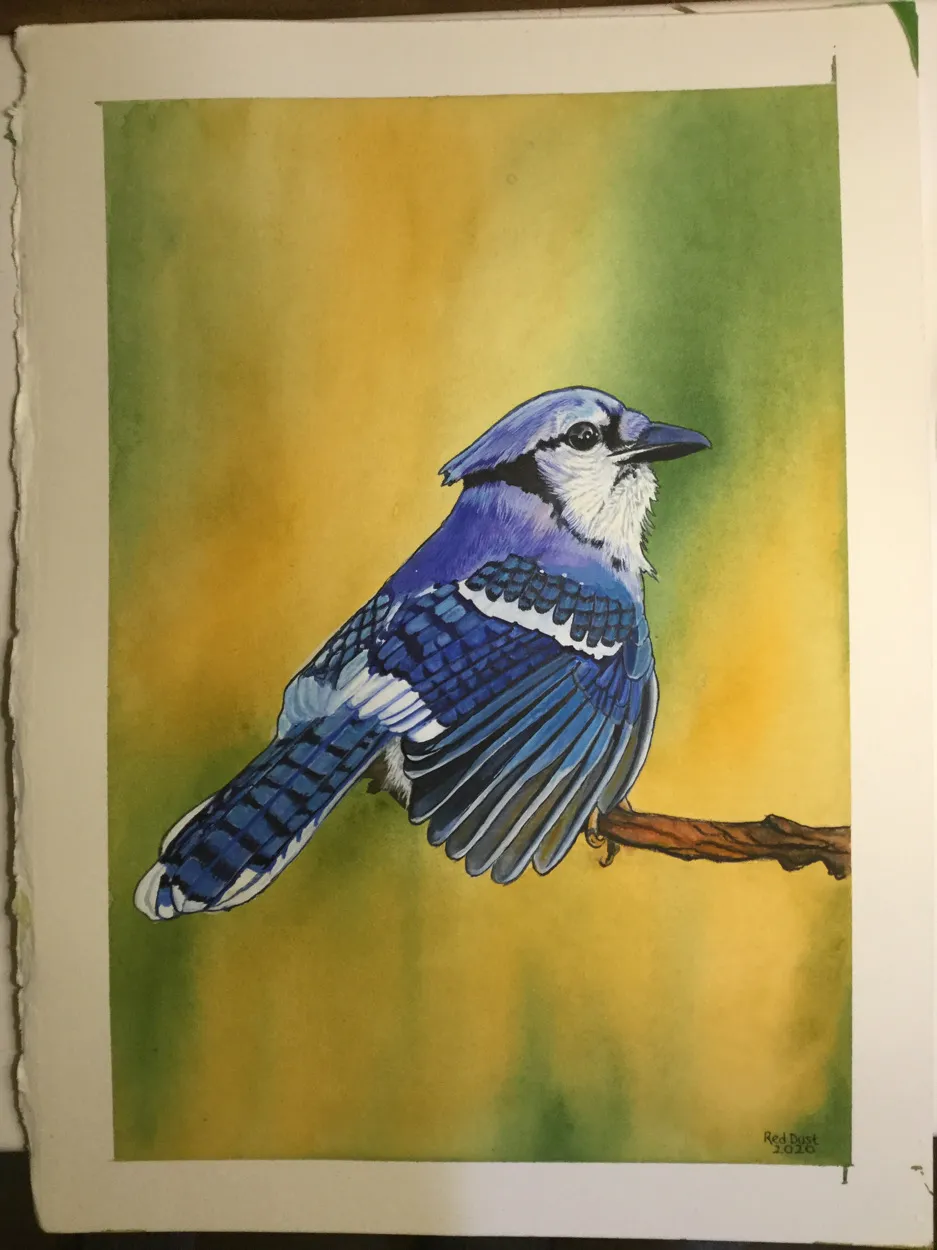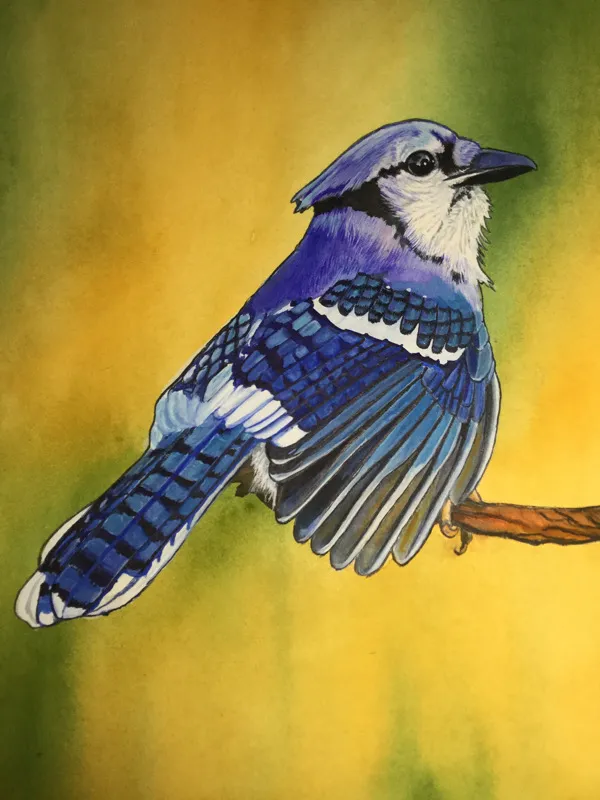This watercolor painting is from a series of bird paintings rendered back in 2020.
Blue Jays from around the United States migrate in flocks to the Great Lakes and Atlantic coasts lines. However, this is only a tiny percentage of Blue Jays where the remaining birds go is a mystery. Blue Jays can be found inhabiting their natural habitat through the winter. Some migrate, some don't, and no one can figure out why.

15 x 11 Hot Press 300lb Cotton Watercolor Paper, Watercolor, and Gouache
I've heard hawk calls and only found Blue Jays; now I know what's going on! The birds can mimic hawk vocalization, and it is thought to notify others in their territory that hawks are out hunting.
When the Blue Jays head crest is flattened, this is a sign the bird is at ease. Usually, the head crest is flattened when the bird feeds and hangs around family members.

An interesting note about the bird's blue color, the pigment in the feathers, called melanin, is brown but reflects blue caused by scattered light through cells on the feathers' barbed surface. The black markings are different from one individual to the next, which helps the flock identify its members.
Blue Jays can live at least 26 years in the wild. Maybe even longer because a banded bird was found dead in a fishing net in Newfoundland/Miquelon territory in 2016, the bird was banded in 1989.
.


 A link to My Blog
A link to My Blog